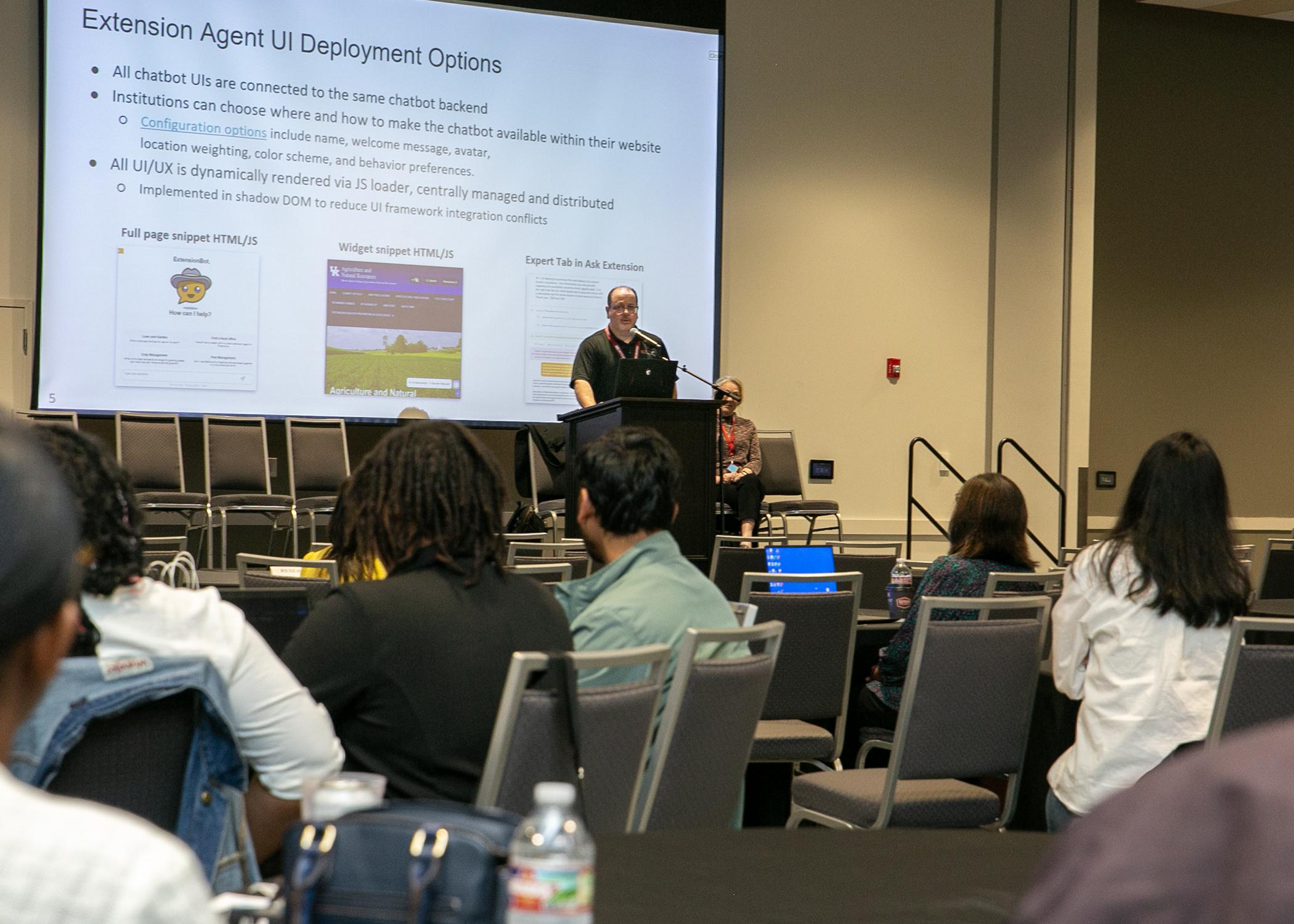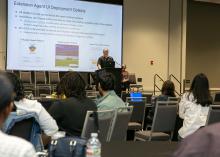AI can help MSU Extension provide better help to users
STARKVILLE, Miss. -- Artificial intelligence is the most recent tool in the toolbox for the Mississippi State University Extension Service in its ongoing efforts to provide the best research-backed information to the residents of the state.
MSU’s Agricultural Autonomy Institute, or AAI, hosted the National AI in Agriculture and Natural Resources Conference on March 31-April 2 in Starkville. ExtensionBot was the first item to be addressed at the conference.
Angus Catchot, director of the MSU Extension Service, told those at the conference that AI can help Extension Services across the country continue to provide the information the public needs.
“As you conduct the research and advance our capacity in AI, don’t forget about Extension. We can be the messengers for you,” Catchot said. “Extension can partner with you. As you go back to your own states, we can help carry that message for you.”
ExtensionBot is the AI engine designed to answer many of the questions presented online to Extension Service websites.
Jamie Varner, head of the MSU Extension Center for Technology Outreach, said ExtensionBot has potential to be a useful tool for the MSU Extension website.
“MSU Extension is in the process of evaluating ExtensionBot and how it may be used to better serve the needs of our clients,” Varner said. “We are seeing an increasing interest in using AI to solve modern challenges, and we’re excited to see how it can be used.”
Extension staff are exploring how to best integrate this AI tool into the new website.
“We want to make sure it is the right fit for MSU Extension and helps us serve the people of Mississippi,” she said.
David Warren is AI program leader for the Extension Foundation and senior director of integrated digital strategies for the Oklahoma State University Agriculture Division. He discussed how data must be prepared and digitized so that it can be used by ExtensionBot.
“ExtensionBot is a front-end service that is configurable for each website it is placed on,” Warren said. “Once deployed, it pulls back answers and links to resources from that state’s Extension Service website.”
Warren explained the process that universities should follow to prepare for use of ExtensionBot to answer questions posed by website users. The first step is organizing, cataloging and digitizing the data offered through the website. That data is then broken into chunks that the AI bot can use.
“ExtensionBot starts with a pre-processing step that looks at the question and decides how to answer it,” Warren said. “It decides if the question needs to go through an AI process to retrieve and incorporate relevant information from external sources before generating responses or straight to a core module for a specific answer.”
A question about business hours or contact information can be answered directly with information on the website, while a question about fertilizer application rates requires the more involved process of Retrieval-Augmented Generation, or RAG.
Debbie Brown, project manager for ExtensionBot, said all organizations preparing to take advantage of AI are struggling with the structure of their data. As part of this process, ExtensionBot offers a data standard and validation tool that helps institutions prepare their data for AI searches.
“The challenge is for your institution to get your data in a digitally consumable structure,” Brown said. “These AI systems rely on vast amounts of high-quality data that is accurately organized. Unless this happens, it is very hard to assume your AI is giving an answer that is trustworthy.”
Visit MSU Extension online at .




